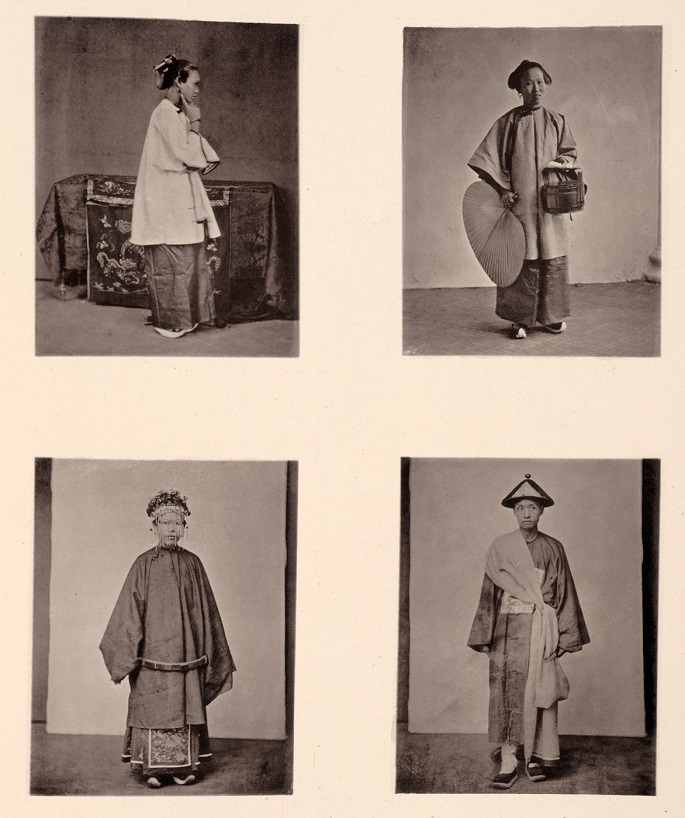No living Chinese--or any human for that matter--could go back to the 1870s to witness how China looked like in the late 19th century.
One man from the West, however, traveled to China during that time and, through the wonders of photography, captured assorted images of the country and its people, landscapes, architecture, culture and tradition.
Several of those pictures of 1870s China taken by Scottish photographer, writer and geographer John Thomson (1837-1921) will go under the hammer at Swann Auction Galleries in New York on Feb. 14.
A part of Thomson’s “Illustrations of China and Its People,” Swann estimates that the two-volume work, “each volume with 24 photographic plates . . . a total of 110 images,” could fetch $15,000-$25,000.
“Illustrations” also include “studies of dwellings and other structures; splendid landscapes of various provinces; and intimate ethnographic portraits depicting people of different occupations and provincial backgrounds,” according to Swann.
“This is essentially the first photographic travelogue dedicated to China,” said Daile Kaplan, an auctioneer at Swann Galleries, quoted The Sun.
She described the images as “very intimate.”
Yixin aka Gong Qinwang or Prince Gong/Kung (1833-1898), a top official during the Qing Dynasty, somewhat received the honor of appearing first in the series of pictures in Volume 1.
The portrait shows the brother of the Xianfeng emperor sitting on a chair at the garden of his vast residence in Beijing, now a tourist attraction and officially called Prince Gong’s Palace and its Adjacent Garden (Gong wangfu ji huayuan) but more commonly as Prince Gong’s Mansion.
Volume I shows sights mostly in Hong Kong and Canton and a glimpse of Macao and the Island of Formosa.
It also presents different people and scenarios: the labor class, Tartar soldiers and boat-people and natives preparing tea, man smoking opium in a restaurant, mendicant priest begging for money outside the temple and other interesting bits and pieces of 1870s China.
Kaplan added: “What he achieved was a very detailed documentation of China and its people.”
At 26, the Edinburgh-born photographer left the capital city of Scotland and went to Singapore on April 1862; thus, beginning a 10-year journey mostly around the Far East, according to the National Library of Scotland.
Thomson visited Bangkok in 1865, trekked the jungles of Cambodia in 1866 to reach Angkor and sailed to Hong Kong in 1868, where he moved his studio from Singapore.
He then “spent the next five years recording China in all its diversity.”
Swann said that Thomson covered “more than 6,500 grueling kilometers.”
He was “carrying his cumbersome camera, equipment, and darkroom chemicals with him, often in regions westerners had not yet seen.”
When Thompson returned to London, he wrote the text for “Illustrations of China and Its People: A Series of Two Hundred Photographs, with Letterpress Descriptive of the Places and People Represented.”
“My design . . . is to present a series of pictures of China and its people, such as shall convey an accurate impression of the county . . . of the arts, usages, and manners which prevail in different provinces of the Empire,” wrote Thomson in the two-page Introduction.
“I made the camera the constant companion of my wanderings,” he continued.
“And to it I am indebted for the faithful reproduction of the scenes I visited, and of the types of race with which I came into contact.”
Volumes 1-4 were published in London, with 1 and 2 in 1873 and the last two ones in 1874.
According to Kaplan, an American socialite purchased the first two volumes in the 19th century, reported Daily Mail Online.
They were passed on from one generation to another but the same family has kept them for nearly 150 years.
Prior to the public auction sale, “Icons & Images: Photographs & Photobooks,” Swann Auction Galleries will exhibit the items on Feb. 9-11, 13 and 14.
The auction will commence at 1:30 p.m. on the 14th.



























